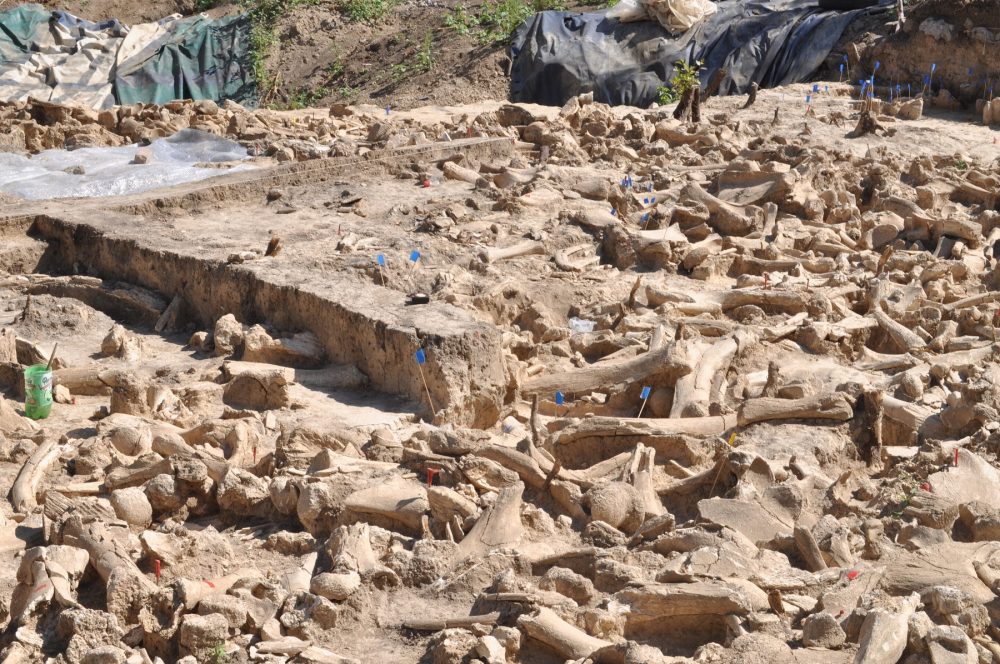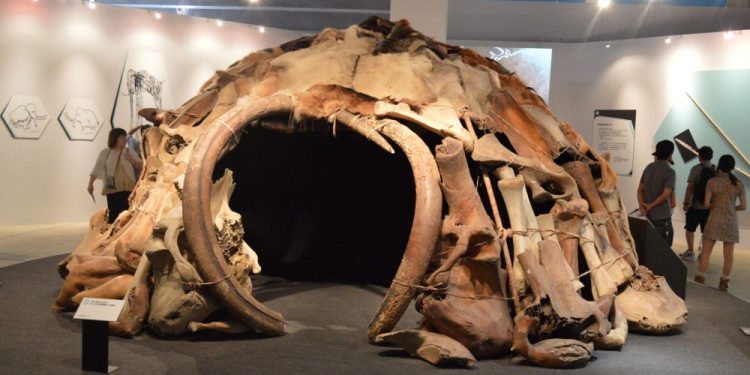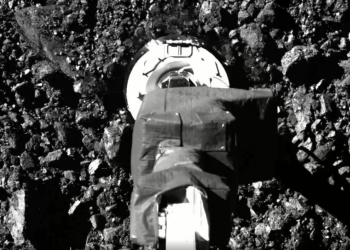Some 25,000 years ago, an ancient group of people hunted Mammoths. They fed off them and used their skin to create clothes. The bones that were left were not thrown away. A study published by Dr. Alexander J.E. Pryor, a post-doctoral researcher in archaeology at the University of Southampton, explains how ancient people used Mammoth bones to create structures that were used for different purposes.
25,000-Year-Old Structure
According to a statement, the ancient structure dates back some 25,000 years ago and is one of the oldest human-made structures ever found in present-day Russia. The mammoth-bone building’s exact purpose remains an enigma, and it is unlikely it was used as a hut. The archaeological site where the structure was found is known as Kostenki 11, and its primary part is a large circular structure made most out of Mammoth Bones. Archaeological excavations of the site suggest the structure was built of more than 60 mammoth bones.
Although the structure’s exact purpose remains mysterious, archaeologists theorize it may have been used either for shelter or religious or ceremonial purposes.
Discoveries made
More than 300 years ago, in 1703, mammoth teeth were found at the site. A Dutch traveler and artist called Cornelis de Bruijn wrote after visiting the site:
“In the locality in which we were, to our great surprise, we found many elephant teeth, of which I kept one myself, for the sake of curiosity, but I can not understand how these teeth could get here. True, the Emperor [Peter I] told us that Alexander the Great, passing this river, as some historians assure, reached the small town of Kostenka, about eight versts from here, and that it could very well be that at that time several elephants had fallen, the remains of which are still here today.”
After a series of excavations at the Kostenki 11 archaeological site, the odd structure was revealed by archaeologists, located some 50 kilometers from present-day Moscow. The structure, which remained buried since time immemorial, is now considered one of the largest of its kind and proves that more than 25,000 years ago, ancient people took great care in constructing large buildings.
What was its purpose?
Although we can’t know who exactly designed and built the structure, archaeologists estimate it was erected by a group of hunter-gatherers who saw a need to settle—for at least a short period—at the site.
The structure is large, measuring 11 meters across, and archaeologists say it must have required great building effort. The bones used in the construction were obtained from mammoths that were hunted in the region and other animals like wolves, horses, bears, reindeer, and arctic foxes.
Archaeologists have excavated 51 lower jaws and more than 60 individual mammoths’ skulls. While experts still don’t know the exact purpose of the restructuring, evidence of human occupation within it has been found. Researchers have discovered that the ancient people who built it burned wood inside it. Archeologists found charred wood in the soil samples within. One possibility is that the structure was used as a shelter that helped protect a larger group of people from extreme weather.
Kostenski 11
Another possibility is that the ancient building was used as a gathering center where ritualistic or religious ceremonies occurred. The Kostenki 11 archaeological site is unique, but other similar structures have been found across Europe, although none of these structures are as old as the one at the Kostenki 11 site.
Previous constructions made of mammoth bones were found to date no later than 22,000 years ago. The Kostenki 11 site’s circular structure is at least 3,000 years older than all other similar sites. Various similar circular structures tell us that ancient people were already engaged in building large structures much earlier than previously thought.

Similar structures
Although similar sites made of mammoth bones may have been used for shelter or religious purposes, the Kostenki 11 site structure probably served an entirely different purpose. That’s because, based on evidence at the site, archaeologists have discovered a large opening in the roof’s structure, which would have made it unsuitable for larger-term occupation, the archaeologists have revealed.
The entire discovery is odd because excavations have yielded only a few stone tools at the site. So, instead of being used as a shelter, researchers have suggested that hunter-gatherers may have used similar structures 25,000 years ago to store food or other artifacts that were used on a day-to-day basis.
Although this may have been the case, some experts are inclined to believe that the circular structures—and others like it—may have been used as a kind of social gathering center rather than an ancient form of storage room. Another mystery is why the ancient people chose mammoth bones as the primary construction material. One possible explanation set forth by experts is that in the distant past, the area was sparsely populated by trees, which means that the only construction material available to the people was large bones from animals such as mammoths.
A rare example of Palaeolithic hunter-gatherers?
“Kostenki 11 represents a rare example of Palaeolithic hunter-gatherers living on in this harsh environment,” the study’s lead author, Alexander Pryor, said in a statement. “What might have brought ancient hunter-gatherers to this site? One possibility is that the mammoths and humans could have come to the area on masse because it had a natural spring that would have provided unfrozen liquid water throughout the winter—rare in this period of extreme cold.”
As revealed by experts, the last Ice Age on Earth swept northern parts of Europe between 75,000 to 18,000 years ago, reaching its coldest, most severe stage between 23,000 to 18,000 years ago. This period coincides precisely with the mammoth bone structure at the Kosteski 11 site. The findings from the archeological site Kostenki 11 have been published in the Journal Antiquity.
NOTE* The featured image does not represent the exact shape of the ancient hut discussed in this article and is just for reference.
Join the discussion and participate in awesome giveaways in our mobile Telegram group. Join Curiosmos on Telegram Today. t.me/Curiosmos











